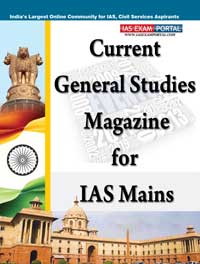(HOT) UPSC Current Affairs 2025 PDF
NEW! The Gist (NOV-2025) | E-BOOKS
Current General Studies Magazine: "Forging PPP of a Different Kind" February 2016

Current General Studies Magazine (February 2016)
General Studies - III "Geography Based Article" (Forging PPP of a Different Kind)
It should come as no surprise that a funds- and infrastructure-starved country like India should take a shine to public-private partnerships (PPPs). In fact, the private sector is expected to bring in at least half of the over $1 trillion investment in infrastructure that is targeted as part of the Twelfth Five Year Plan (2012-17).
Add to that the expertise of the private player, and off-balance-sheet access to funds for public sector entities that PPPs bring to the table, and we could forgive policymakers for thinking they finally have the magic pill to deliver India from its low-growth trajectory.
But if we were to draw upon our experience in governance and capacity building across sectors and learn a few lessons, we’d need to take PPPs more seriously. And if we could compare the concept of PPP to the theory of gravity, then the recent Chennai floods could well be the ‘falling of the apple’ moment.
Chennai showed the way
In December, Chennai showed how even a heterogeneous civil society could come together to make a difference. Some of these Good Samaritans even put their own lives in danger while trying to save strangers. The story of Yunus, a Muslim man who did not know how to swim, but did not bat an eyelid before jumping into the water to rescue a Hindu woman in labour, immediately comes to mind. (In a touching side story, the deeply moved couple named their newborn Yunus). And then there was 18-year-old Imran, from an impoverished neighbourhood, who succumbed to an insect bite that he suffered during relief work.
While Yunus’s and Imran’s stories show acts of extreme courage and sacrifice, there were thousands of others who contributed in their own way, such as the doctors who organised free medical camps and teachers who took special classes for students preparing for their board examinations.
Now the question is, as a society, are we going to fritter away this great swell of human kindness that has manifested itself in myriad ways? Are we going to treat this as a single, isolated display of compassion that is incapable of being nurtured, sustained, and channelised for a better tomorrow? Can we afford to?
Tiding over the resource crunch
There is a shortage of half-a-million policemen and teachers across States. The National Health Mission also talks about a severe shortage of specialists and overburdened primary and community health centres.
While filling up these vacancies would definitely go a long way in improving the employment situation and the overall standard of living, would it hurt if the government used the services of the general public — available absolutely free of cost — in some of these sectors?
If a Corporation school in Chennai, whose ‘pass’ percentage in public examinations is nothing to write home about, could collaborate with both private teachers and subject-matter experts to conduct weekend classes for the students for free, wouldn’t it be a win-win situation for everyone?
Similarly, if a primary health centre in Bihar could throw its doors open to doctors ready to do pro bono work at a fixed time or day in a week, what more could one ask for? The benefits of such an arrangement could be manifold. Besides the obvious improvement in service delivery, this intermingling of government staff with private individuals would help the former imbibe best practices. This will also help bring transparency and serve as a social audit of government services and accounts.
Calling for equal partnership
But this is easier said than done if one goes by the experience of non-government organisations that have worked or that work with the government. Says Prahalathan, the founder of Bhumi, an NGO that works with orphaned and underprivileged children in the field of education: “The biggest problems we face when we deal with the government include ad hocism and lack of continuity. Each officer has his or her own idea of what needs to be done. By the time there is a tangible impact, either the officer moves out or there is a regime change, and we are back to where we had started.”
So, is the absence of a policy framework on how to co-opt the civil society the only problem? No, says Balaji Sampath, founder and secretary of AID India: “It is not about rules or regulations. In fact, we have had the Council for Advancement of People’s Action and Rural Technology, an agency for bringing together voluntary organisations and the government for sustainable development in rural areas. But the problem here is one of mindset. Wherever the government has engaged with an NGO, it looks at the NGO more as a contractor which could bring down its overheads (in terms of staff cost) and relieve it of some of its statutory responsibilities. The moment the NGO starts suggesting improvements or a different way of doing things, it is immediately shown the door.”
Adds Dr. Prahalathan: “We must admit that the government continues to be the biggest welfare machinery. But with all due respect, the government should also understand that for many of these NGOs, doing what they are doing is not a 9-5 job. So, they bring in lot of passion and expertise to the table. If both these are not recognised, they see no point in working with the government.” Many NGOs say that the government displays this ‘big brother attitude’ even when an NGO brings in everything to a project, including funds.
If the government can iron out these wrinkles, it could well be setting in motion an army of selfless volunteers who could be the solution to many of the problems that the government is blamed for.

